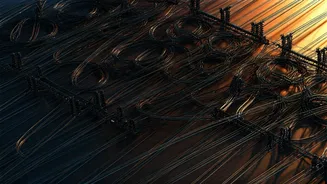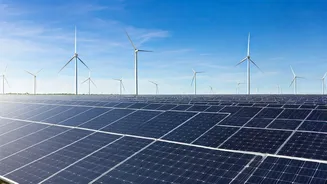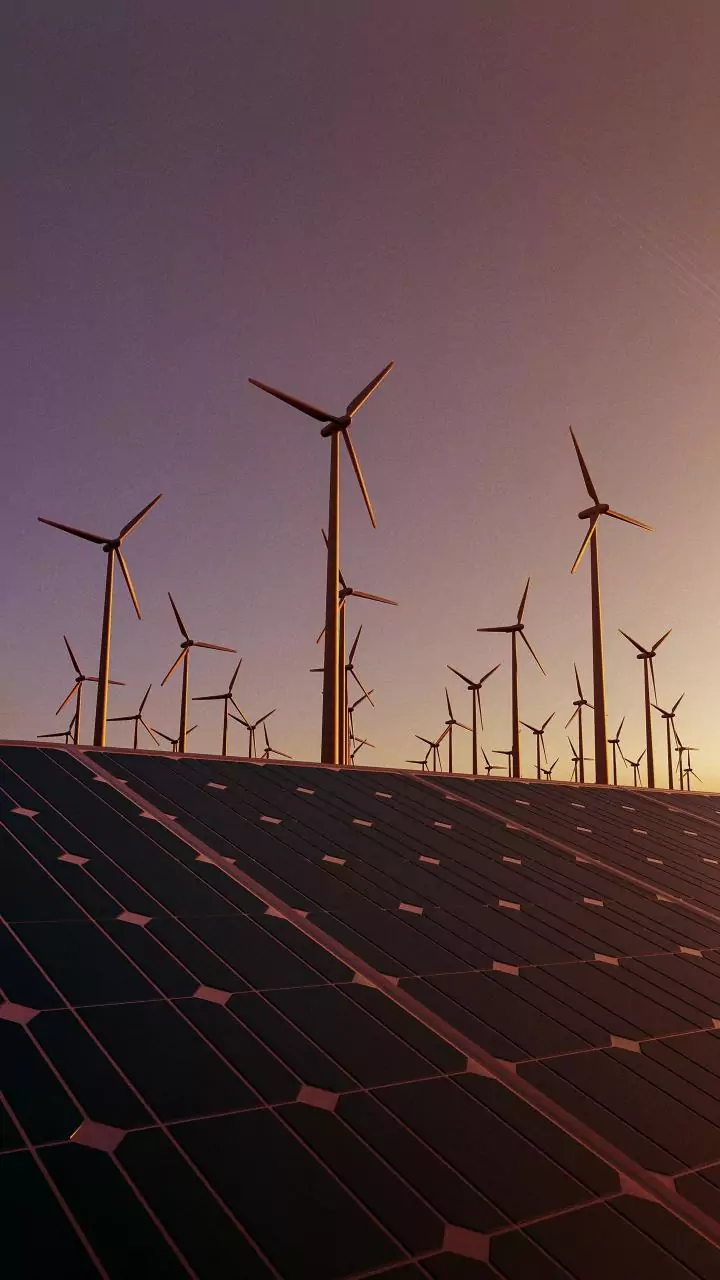Green Energy Aspiration
India has set an ambitious goal to become a global leader in renewable energy. The nation has been trying to move away from fossil fuels and towards sources
like solar and wind power. However, the existing infrastructure, primarily the electricity grid, is not ready for the influx of renewable energy. The grid, which was originally designed for large, centralized power plants, is struggling to handle the intermittent nature of solar and wind energy. The fluctuations in power generation from these sources create instability, making it difficult to maintain a reliable power supply. The grid needs significant upgrades to accommodate the increasing share of green energy. This includes expanding transmission lines, upgrading substations, and implementing smart grid technologies. The lack of adequate infrastructure is a major bottleneck, slowing down the implementation of renewable energy projects and threatening the country's climate goals.
Grid Infrastructure Bottlenecks
The primary issue is the inadequate capacity of the grid to transmit the generated green power to consumers. Transmission lines and substations are often overloaded, particularly in regions with high concentrations of renewable energy projects. This congestion leads to curtailment, where renewable energy producers are forced to reduce their output because the grid cannot handle the excess supply. This not only results in financial losses for project developers but also diminishes the overall efficiency of the renewable energy sector. The grid infrastructure needs to be modernized and expanded urgently. This requires significant investment in new transmission lines, upgrading existing substations, and deploying smart grid technologies that can optimize power flow and manage the variability of renewable energy sources. The government is working to address these issues, but progress has been slow. Delays in obtaining land permits, environmental clearances, and funding are some of the factors holding back infrastructure development.
Implications and Consequences
The gridlock has significant consequences for India's renewable energy targets. The delay in grid upgrades has hampered the commissioning of new renewable energy projects, as developers are hesitant to invest in projects that cannot deliver power to the consumers. This delay hampers the growth of the renewable energy sector and reduces the overall share of green power in the energy mix, making it harder to meet the emissions reduction goals. Moreover, the grid instability associated with the influx of renewable energy poses risks to the reliability of power supply. Frequent outages and voltage fluctuations can disrupt industrial operations, and affect residential consumers, causing both economic losses and public dissatisfaction. If left unaddressed, grid constraints could undermine the viability of renewable energy projects, deter further investment, and slow down the energy transition, impacting India's climate commitments and hindering its sustainable development goals.
Solutions and Strategies
Addressing the gridlock requires a multi-pronged approach involving strategic policy measures, financial investments, and technological advancements. The government has to accelerate the pace of infrastructure development. Streamlining the approval process, expediting land acquisition, and offering financial incentives for grid upgrades will be vital. Encouraging private sector participation through public-private partnerships (PPPs) can help mobilize funds and expertise. Deploying smart grid technologies, such as advanced metering infrastructure (AMI), can improve grid management and optimize power flow. Smart grids enable real-time monitoring and control of the grid, allowing for better integration of renewable energy sources. Furthermore, supporting energy storage solutions, such as battery storage systems, can help smooth out the intermittency of renewable energy. Energy storage can store excess power during times of high generation and release it during periods of low generation. Finally, promoting regional and inter-state grid connectivity will enable the transfer of power from areas with high renewable energy production to areas with high demand, ensuring efficient power distribution.














